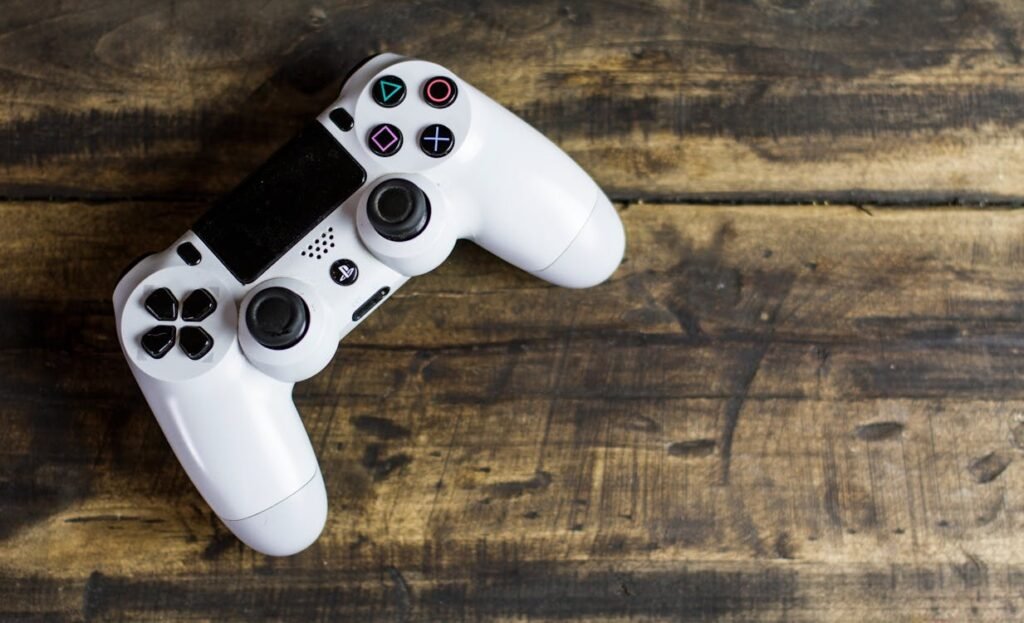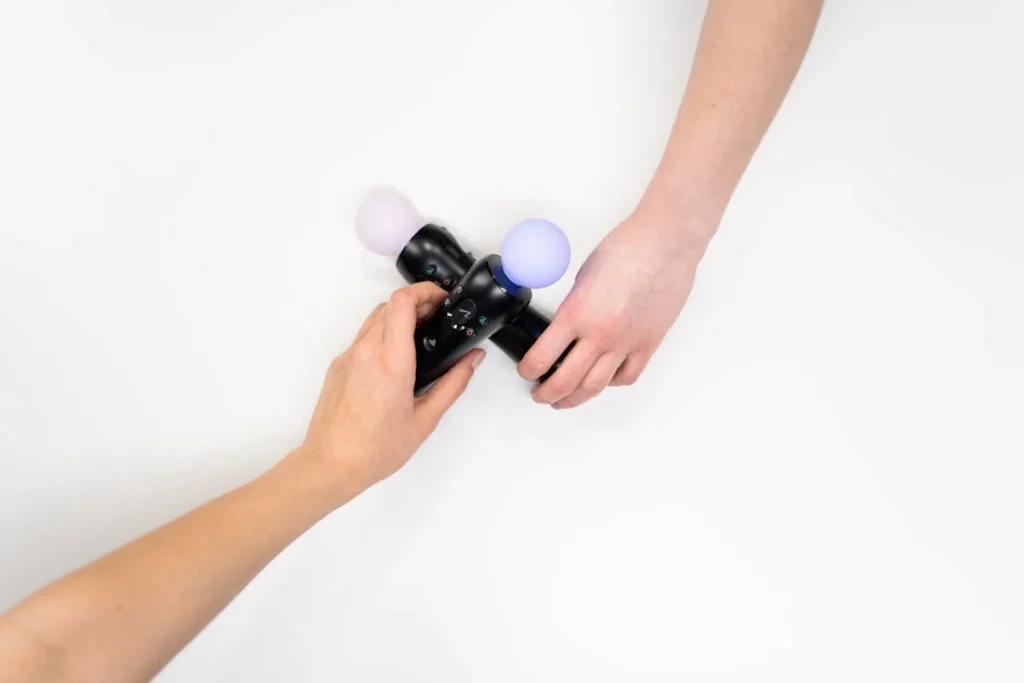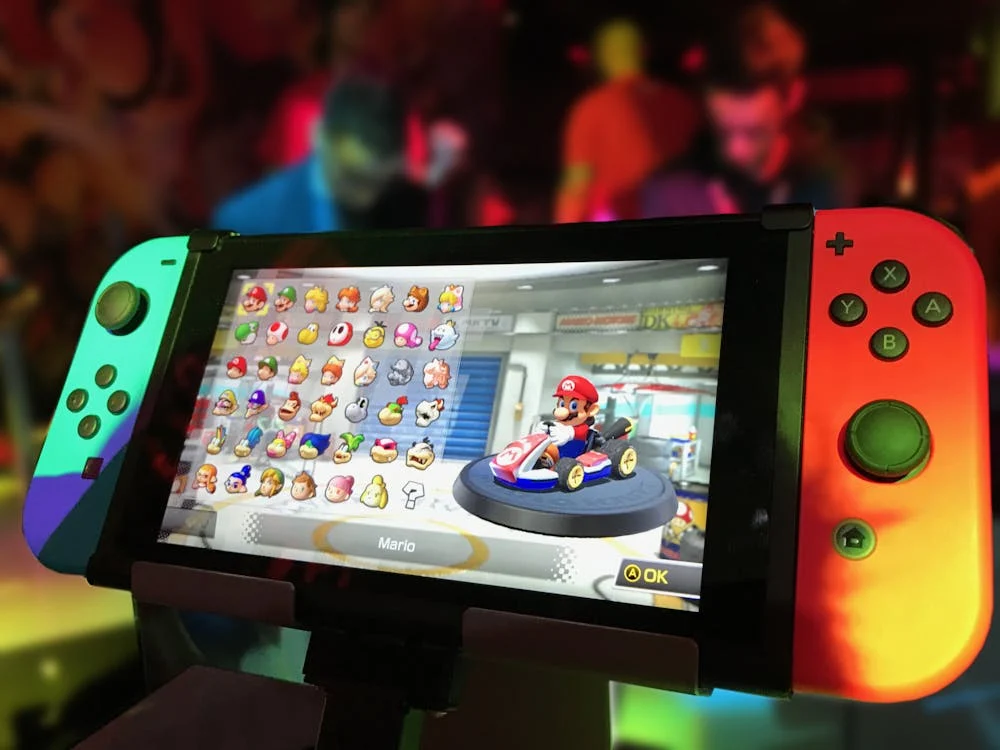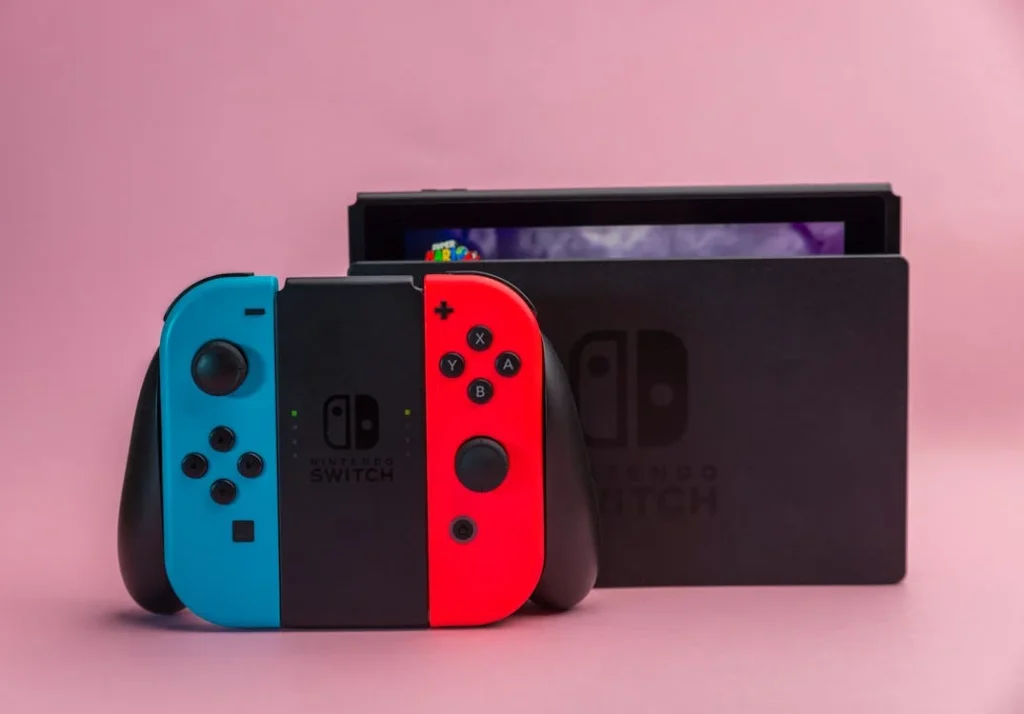Video games should be for everyone. Whether it’s exploring vast worlds, competing in fast-paced matches, or solving challenging puzzles, gaming is an incredible way to have fun, connect with others, and even improve cognitive skills. But for many players with disabilities, gaming can be difficult due to physical, visual, or cognitive challenges.
Thankfully, accessibility in gaming has improved dramatically in recent years. Game developers, tech companies, and adaptive equipment manufacturers are working hard to ensure that everyone can enjoy their favorite games without limitations. From specialized controllers to in-game settings designed for different needs, gaming is becoming more inclusive than ever.

Adaptive Controllers: Making Gaming More Inclusive
One of the biggest challenges for players with disabilities is the design of standard gaming controllers. These controllers are built for people with full mobility, requiring rapid button pressing, precise joystick movement, and coordinated finger actions.
For individuals with limited hand mobility, muscle weakness, or conditions like cerebral palsy, spinal cord injuries, or amputations, traditional controllers can be difficult to use.
However, the gaming industry has made great progress in developing adaptive controllers that provide more accessibility. These specialized devices allow players to customize their controls, making gaming more comfortable and enjoyable.
By using alternative input methods—such as large buttons, foot pedals, or head-operated switches—adaptive controllers ensure that more people can play games with ease.
Xbox Adaptive Controller (XAC)
One of the most revolutionary accessibility devices in gaming is Microsoft’s Xbox Adaptive Controller (XAC). It was developed in partnership with accessibility organizations to help gamers with limited mobility.
Instead of using a standard gamepad, the XAC functions as a hub that connects to various external devices like joysticks, switches, and buttons, allowing players to create a custom control setup.
The biggest advantage of the XAC is its modularity. Players can attach different assistive input devices depending on their needs. For example:
- Someone with limited hand mobility can use large external buttons that are easier to press.
- A player with quadriplegia can operate the game using sip-and-puff switches, which register actions based on breath.
- Foot pedals can replace traditional buttons for those who have more mobility in their legs than in their hands.
- A player who struggles with fine motor skills can use head-operated switches or joysticks positioned in a way that suits them.
Microsoft also designed the XAC to work seamlessly with both Xbox and PC games, ensuring compatibility across a wide range of titles. Since the buttons can be remapped, each player can set up the controller in a way that makes gaming easier and more intuitive.
PlayStation Access Controller
Sony has also taken big steps toward gaming accessibility with the release of the PlayStation Access Controller (formerly known as Project Leonardo).
Unlike traditional controllers, this device has interchangeable button caps, joystick caps, and multiple positioning options. Players can arrange the buttons in a way that suits their comfort and mobility, allowing for a more personalized experience.
One of the best features of the Access Controller is that it can be used in multiple ways:
- It can be placed on a flat surface, making it easier for those who cannot hold a standard controller.
- It can be mounted onto a wheelchair or a stand for better positioning.
- It supports multiple button remapping options, so players can assign controls based on what works best for them.
Since it is fully compatible with PlayStation consoles, gamers with disabilities can enjoy a wide variety of titles without limitations.
Custom Adaptive Controllers for Unique Needs
While the Xbox Adaptive Controller and PlayStation Access Controller are great solutions, they may not work for everyone. Some players have highly specific accessibility needs that require custom-built adaptive controllers.
Organizations like SpecialEffect and AbleGamers specialize in creating personalized solutions. These non-profits work directly with players to develop controllers tailored to their abilities. Some examples of unique adaptive controllers include:
- Eye-tracking controllers, which allow players to control games using only their eye movements.
- Voice-controlled gaming setups, where commands are executed through spoken instructions.
- One-handed controllers, designed for players who have mobility in only one hand.
The Importance of Adaptive Controllers
The introduction of adaptive controllers has changed the gaming industry for the better. Players who were once unable to enjoy video games due to physical limitations now have a way to participate in their favorite hobby.
More importantly, these controllers give independence, confidence, and a sense of belonging to gamers with disabilities.
As technology continues to evolve, we can expect even more innovations in accessible gaming. With ongoing support from gaming companies and accessibility advocates, the future of gaming is becoming more inclusive than ever.

In-Game Accessibility Features: Making Games More Playable
Technology has made it possible to create physical accessibility solutions, but one of the most impactful changes in gaming comes from in-game accessibility features.
Many developers have started incorporating customizable options that allow players with disabilities to adjust their gaming experience according to their needs.
These features improve playability by modifying controls, visuals, and audio settings, ensuring that no one is left behind.
Customizable Controls for Better Playability
One of the most essential in-game features for accessibility is button remapping. Players with limited mobility may struggle with traditional control schemes, where quick reflexes and complex button combinations are required.
By allowing full button remapping, games enable players to assign actions to buttons they can easily reach and press. This is especially useful for one-handed players or those who rely on adaptive controllers.
Some games go beyond basic button remapping and offer one-handed mode options. This feature restructures the entire control system so that all essential functions can be performed using a single hand.
Players who have difficulty pressing multiple buttons at once can benefit from toggle options, where they can activate an action (such as aiming or sprinting) with a single press instead of having to hold down a button continuously.
Another major improvement in gaming accessibility is the adaptive difficulty setting. Not all players have the same reaction time, motor skills, or ability to handle fast-paced gameplay.
Some games now allow players to slow down game speed, making it easier to react and process movements. Others provide auto-aim assistance, which helps players who struggle with precise aiming due to tremors or limited mobility.
Visual Accessibility: Helping Players See Clearly
For players with visual impairments, gaming can present significant challenges. Many modern games now include features that make visuals clearer and more distinguishable.
High-contrast modes allow players to adjust color settings, making objects, enemies, and backgrounds easier to differentiate. Some games include options to highlight important objects with bright colors so they stand out against the environment.
Colorblind players often struggle with traditional gaming color schemes. To address this, many developers have introduced colorblind modes, which adjust the game’s colors to suit different types of color blindness, such as deuteranopia, protanopia, and tritanopia.
These settings ensure that important visual elements are not missed due to color perception issues.
For players with low vision, text enlargement and UI scaling can make a significant difference. Many games now allow players to adjust the size of text, subtitles, and interface elements, ensuring that everything on the screen is easier to read.
Some even include screen reader support, where game menus and on-screen text are read aloud, assisting players who cannot see clearly.
Audio Accessibility: Enhancing the Gaming Experience for All
Sound plays a crucial role in gaming, helping players detect enemies, follow dialogue, and experience immersive storytelling. However, for players who are deaf or hard of hearing, traditional audio-based cues can be a barrier.
To make games more accessible, developers have introduced detailed subtitles and captions, which provide not only spoken dialogue but also sound effects and tone indicators.
Some games even allow customization of subtitle size, background color, and speaker labels for better readability.
Another important feature is visual sound indicators. Instead of relying on audio cues, some games provide visual representations of sounds, such as footsteps, gunfire, or approaching enemies.
These indicators help players who have difficulty hearing crucial in-game sounds, ensuring they do not miss important gameplay moments.
For players who struggle with processing complex audio environments, sound balancing options allow them to adjust volume levels for different in-game sounds.
By increasing dialogue volume and reducing background noise, players can focus on key audio cues without distraction.
The Impact of In-Game Accessibility Features
The introduction of these features has significantly improved the gaming experience for players with disabilities. Instead of struggling with default settings that do not accommodate their needs, players now have the ability to customize their experience and play comfortably.
These features not only enhance gameplay enjoyment but also ensure that gaming remains an inclusive space for everyone, regardless of their physical or cognitive abilities.
As more developers recognize the importance of accessibility, we can expect future games to include even more innovative options that remove barriers and allow every player to experience gaming without limitations.
Accessibility is no longer just an extra feature—it is becoming a standard in game development, ensuring that everyone has the chance to play, compete, and enjoy the worlds that video games create.

Assistive Technologies: Enhancing the Gaming Experience
Beyond adaptive controllers and in-game accessibility settings, assistive technologies have opened new possibilities for players with disabilities.
These advanced tools provide alternative ways to interact with games, allowing individuals with limited mobility, visual impairments, or other challenges to play with greater ease and independence.
From voice-controlled systems to eye-tracking technology, these innovations are breaking down barriers and making gaming more inclusive.
Eye-Tracking Technology: Playing Without Hands
For players who cannot use traditional controllers due to mobility impairments, eye-tracking technology provides a groundbreaking solution.
Eye-tracking software allows players to control in-game movements and actions using only their gaze. By looking at specific areas of the screen, players can move their character, aim at targets, and even navigate menus.
Tobii, a leading developer of eye-tracking systems, has integrated this technology into gaming, offering players a hands-free way to interact with their favorite titles.
Games that support eye-tracking adjust camera angles based on where the player is looking, making exploration and targeting more intuitive. Some games also use blink-based controls, allowing players to perform actions by blinking instead of pressing buttons.
This technology is particularly beneficial for individuals with conditions like spinal cord injuries, ALS, or muscular dystrophy, who may have limited or no control over their hands.
By eliminating the need for physical input, eye-tracking technology allows these players to fully engage in gaming without barriers.
Voice-Controlled Gaming: Using Speech to Play
Voice recognition technology has become increasingly sophisticated, allowing players to control games using voice commands.
Speech-to-text software enables players to issue commands such as “jump,” “reload,” or “attack” without pressing a button. This is especially useful for gamers who have difficulty with fine motor control or repetitive hand movements.
Some companies, like VoiceAttack and Talon Voice, offer customizable voice control software that integrates with PC and console games. Players can create personalized voice commands to replace button presses, making gaming more accessible and comfortable.
In addition to in-game controls, voice recognition can assist with navigating menus, chatting with teammates, and even launching games without needing to touch a controller.
For players with limited mobility, voice control provides a hands-free alternative that enhances their ability to interact with games, reducing frustration and increasing their independence.
Adaptive Keyboards and Mouse Alternatives
For gamers who prefer playing on PC but struggle with standard keyboards and mice, adaptive input devices offer a flexible solution. Some players may have difficulty pressing small keys or using a traditional mouse, making gaming uncomfortable or even impossible.
Large-key keyboards, one-handed keyboards, and customizable gaming keypads help players with mobility challenges by allowing them to reconfigure layouts based on their needs.
Some adaptive keyboards feature programmable keys, allowing players to assign complex commands to a single keypress, reducing the strain of repetitive movements.
For those who cannot use a mouse, head-tracking devices provide an alternative way to control the cursor. These systems use sensors to track head movements, enabling players to move their character or aim in first-person shooter games simply by tilting their head.
This technology is especially helpful for individuals with limited hand mobility, offering a more natural and effortless way to interact with the game.
Haptic Feedback and Adaptive Sensory Devices
For players with low vision or complete blindness, haptic feedback technology provides an alternative way to experience gaming.
Haptic devices use vibrations and tactile feedback to convey important in-game information, such as enemy movements, environmental changes, or incoming attacks.
Some games integrate 3D audio and directional sound cues, allowing blind players to navigate their surroundings without needing to rely on visuals.
For example, games like “The Last of Us Part II” include audio cues that help players determine where objects, enemies, or obstacles are located, creating a fully immersive experience.
Other adaptive sensory devices, such as braille controllers and touch-based gaming interfaces, allow visually impaired players to receive game information through touch rather than sight. These innovations ensure that gaming remains accessible to individuals of all abilities.
The Future of Assistive Gaming Technology
As technology advances, gaming is becoming more inclusive than ever.
Assistive technologies such as eye tracking, voice control, and adaptive sensory devices are opening up new opportunities for players with disabilities, allowing them to experience games in ways that were once unimaginable.
The future of gaming accessibility will likely include AI-driven adaptive controls, more advanced haptic feedback systems, and deeper integration of assistive technologies into mainstream games.
As developers continue to prioritize inclusivity, we can expect to see even more solutions that remove barriers and make gaming a welcoming space for all players.

The Role of the Gaming Community in Accessibility
While technology and game developers have played a significant role in improving accessibility, the gaming community itself has been a powerful force for change.
From advocating for better accessibility features to supporting players with disabilities through streaming, online communities, and tournaments, gamers around the world are helping to create a more inclusive environment.
The Rise of Accessibility Advocacy
In recent years, organizations and individual advocates have pushed for better gaming accessibility.
Groups like AbleGamers, SpecialEffect, and The Quadstick Community work to ensure that players with disabilities have the tools, technology, and resources they need to enjoy gaming.
These organizations collaborate with developers to improve in-game accessibility features, donate adaptive controllers, and provide customized gaming setups for individuals with unique needs.
Many content creators and streamers with disabilities have also become advocates, sharing their experiences and educating others about accessibility in gaming.
Players like Steve Saylor (The Blind Gamer) and Rocky Stoutenburgh (RockyNoHands) have helped bring awareness to the challenges faced by disabled gamers while proving that gaming can and should be accessible to all.
Inclusive Online Communities and Support Networks
Online gaming communities have created spaces where players with disabilities can connect, share experiences, and support one another.
Many forums, Discord servers, and social media groups exist to help gamers find adaptive solutions, accessibility tips, and like-minded players who understand their struggles.
Esports and competitive gaming have also started embracing accessibility, with organizations hosting disability-inclusive tournaments and events.
Some major gaming companies now provide accommodations for disabled players in professional gaming, ensuring that they have the same opportunities as everyone else.
Game Developers Listening to Players
One of the biggest shifts in gaming accessibility has come from developers actively listening to feedback from players with disabilities.
Many studios now involve accessibility consultants and disabled gamers in the development process to ensure that their games are designed with inclusivity in mind.
Games like The Last of Us Part II, Forza Horizon 5, and Assassin’s Creed Valhalla have received praise for their extensive accessibility options, showing that major studios are taking these concerns seriously.
A Future Where Everyone Can Play
Gaming is meant to be enjoyed by everyone, regardless of ability. With continued advancements in technology, increased awareness, and ongoing advocacy from the gaming community, the future of accessible gaming looks brighter than ever.
As more developers, content creators, and organizations prioritize inclusivity, the barriers that once prevented disabled gamers from fully participating in the gaming world are slowly being broken down.
The journey toward full accessibility in gaming is far from over, but every new innovation, advocacy effort, and community-driven initiative brings us one step closer to a world where everyone can play, compete, and connect through gaming—without limitations.

The Mental and Emotional Benefits of Accessible Gaming
Beyond entertainment, gaming offers mental, emotional, and social benefits for players with disabilities. For many, video games provide a sense of independence, empowerment, and connection that can be difficult to find in daily life.
While much of the discussion around accessibility focuses on hardware and software solutions, it’s equally important to recognize the positive impact gaming has on mental well-being.
Gaming as a Tool for Rehabilitation
For individuals recovering from injuries or adjusting to life with a disability, video games can serve as a powerful form of rehabilitation.
Many physical therapy programs now incorporate gaming-based rehabilitation, also known as gamified therapy, to help individuals regain movement, coordination, and muscle strength.
Virtual reality (VR) gaming has been particularly effective in rehabilitation, allowing players to engage in immersive experiences that stimulate physical movement in a fun and engaging way.
Games that involve reaching, grasping, and moving in a virtual environment can help players strengthen muscles, improve reflexes, and regain confidence in their physical abilities.
For amputees learning to use prosthetic limbs, gaming can be a safe space to practice movement and control.
Gamified rehabilitation programs allow users to interact with virtual objects using their prosthetics, helping them adapt to new motor skills in an enjoyable and low-pressure environment.
At Robobionics, we incorporate home-based gamified rehabilitation for users of our Grippy™ bionic hand, making the transition to a prosthetic smoother and more intuitive.
The Psychological Benefits of Gaming
Living with a disability can sometimes lead to feelings of isolation, frustration, or anxiety. Gaming offers a healthy escape, allowing players to immerse themselves in worlds where their physical limitations do not define them.
Whether exploring open-world adventures, solving puzzles, or competing in fast-paced matches, gaming provides a sense of achievement and control that can boost self-confidence.
Games with strong storytelling elements also allow players to experience different perspectives and emotional narratives, providing an outlet for personal expression and creativity.
For many players with disabilities, video games become more than just entertainment—they become a way to explore, grow, and find joy.
Social Connection Through Gaming
One of the greatest advantages of gaming is its ability to connect people across the world. Online multiplayer games allow players to interact, compete, and collaborate, fostering friendships that transcend physical barriers.
For individuals with disabilities who may have limited mobility or difficulty participating in traditional social activities, online gaming provides an opportunity to build meaningful relationships and feel part of a community.
Many gaming platforms also include inclusive communication options, such as text-to-speech chat, customizable subtitles, and visual sound indicators, ensuring that players with hearing or speech impairments can fully participate in social interactions.
Gaming communities, streaming platforms, and social media groups provide additional spaces for players to engage with others, share experiences, and find support.
Many disabled gamers have built strong followings as content creators, using their platforms to raise awareness, inspire others, and advocate for continued improvements in accessibility.
The Future of Gaming as Therapy and Connection
As the gaming industry continues to evolve, more developers are recognizing the therapeutic and social benefits of gaming.
With advancements in VR therapy, AI-driven accessibility tools, and gamified rehabilitation, gaming is proving to be a valuable tool for improving quality of life.
The true power of accessible gaming is not just in the technology—it’s in the ability to bring people together, inspire confidence, and create a world where everyone, regardless of ability, can experience the joy of play.

Conclusion
Gaming has come a long way in becoming more inclusive for players with disabilities. With adaptive controllers, in-game accessibility features, assistive technologies, and strong community support, more players than ever can enjoy video games without limitations. These advancements are not just about making gaming possible—they are about ensuring that every player has the freedom to play comfortably, competitively, and joyfully.
Beyond entertainment, gaming provides rehabilitation, emotional support, and social connection, helping individuals regain confidence and build friendships across the world. As technology continues to evolve, the future of gaming will become even more inclusive, breaking down barriers and creating a space where ability is never a limitation.
At Robobionics, we believe in empowering individuals through innovation, whether it’s through bionic prosthetics like Grippy™ or gamified rehabilitation programs. If you or a loved one is exploring adaptive technology, we’re here to help.
Want to experience the power of accessible gaming firsthand? Reach out to us today and learn more about our solutions!



